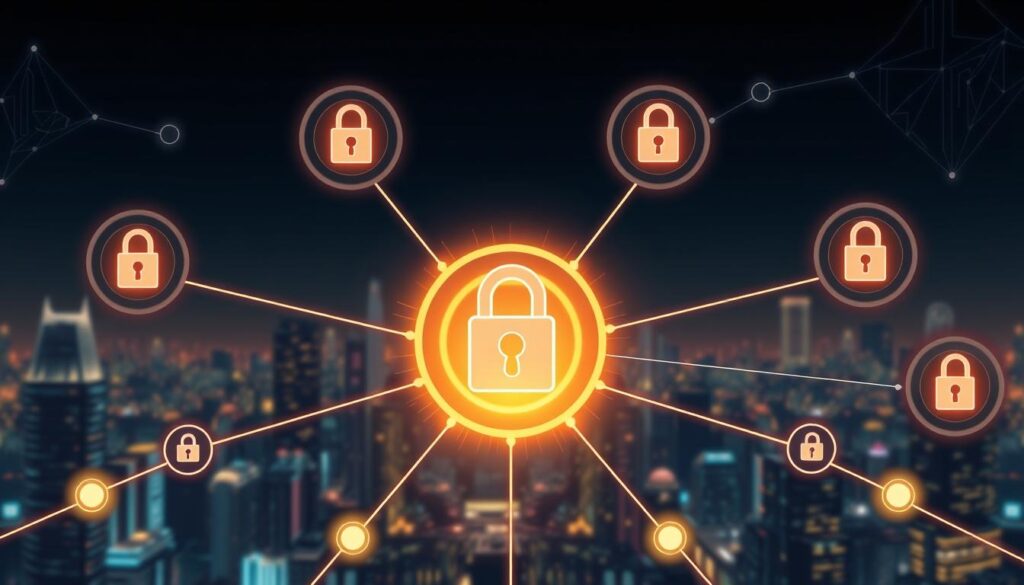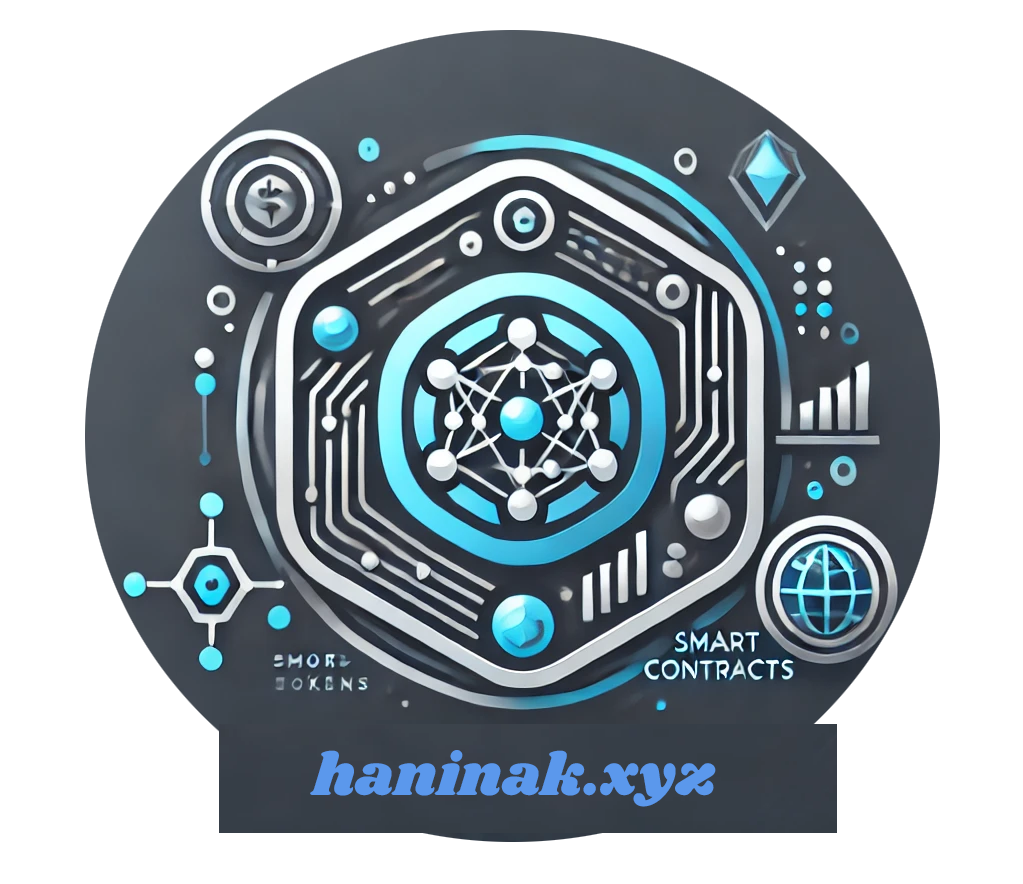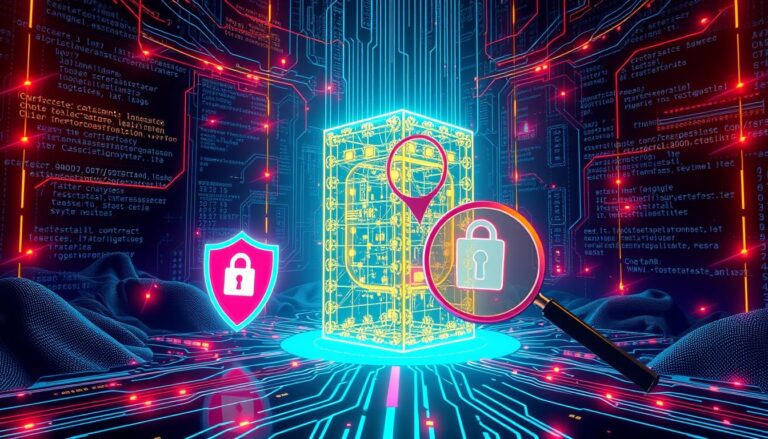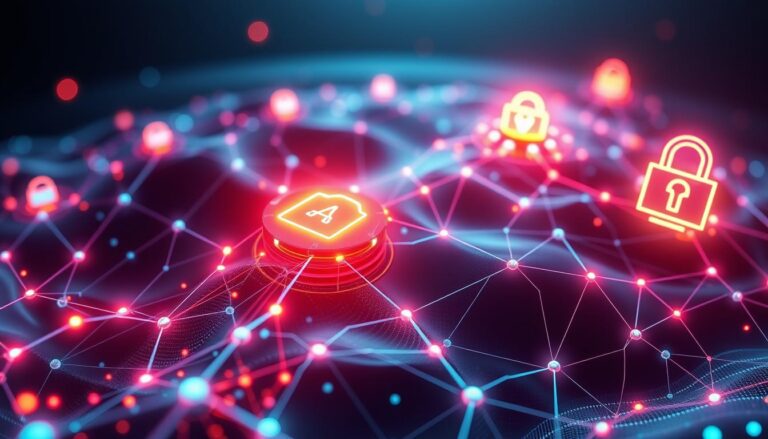What is the role of the Proof of Authority (PoA) protocol in blockchain?
Proof of Authority (PoA) is a new way to agree on blockchain networks. It was created in 2017 by Ethereum co-founder Gavin Wood. Unlike other methods, PoA uses trusted validators instead of solving complex math problems or staking money.
This method makes blockchain networks faster, more efficient, and secure. It uses the good names of pre-approved validators. This helps solve problems like high energy use and the risk of one group controlling everything.
The PoA protocol is becoming more popular in the blockchain world. Companies like VeChain (VET) and Microsoft Azure use it for their business needs. As blockchain grows, PoA’s role in its future is getting more critical.
Understanding Proof of Authority: Core Concepts and Origins
Proof of Authority (PoA) is a new way to agree on blockchain transactions. It’s more energy-friendly and grows better than old methods. PoA uses trusted people, called validators, to check transactions and add new blocks.
Definition and Historical Background
Ethereum co-founder Gavin Wood created Proof of Authority. It aims to make systems more efficient while keeping blockchain’s good parts. Unlike PoW or PoS, PoA uses validators’ reputation to keep the network safe.
Key Differences from PoW and PoS
- PoA needs little computing power, so it uses less energy than PoW.
- It doesn’t need rich participants like PoS does. Instead, it uses their identity and reputation.
- PoA updates the blockchain faster, with quicker block times and more transactions. This makes it great for finance and trading.
The Vision of Gavin Wood
Gavin Wood wanted PoA to solve blockchain’s growth and efficiency problems. It uses known, trusted people to make it easier and more practical. This is especially helpful where trust is hard to build.
Blockchain Technologies and Techniques: How PoA Consensus Works
In the fast-changing world of blockchain, Proof of Authority (PoA) stands out. It ensures immutability and transparency in distributed ledger systems. Unlike Bitcoin’s Proof of Work (PoW) or Ethereum’s Proof of Stake (PoS), PoA uses pre-approved validators to keep the network running.
The PoA consensus process is automated. Validators can work without constant supervision. When a new transaction is proposed, all validators check its validity. Then, a consensus algorithm picks which validator creates the new block.
After a block is made, it’s shared with all nodes for verification. Once verified, it’s added to the blockchain. This method makes PoA networks fast and efficient, perfect for big businesses that need speed and reliability.
However, PoA’s use of pre-approved validators raises concerns about decentralization. It could lead to single points of failure. These issues need to be handled well in PoA systems.
| Consensus Mechanism | Characteristics |
|---|---|
| Proof of Work (PoW) | Energy-intensive, used by Bitcoin and Litecoin |
| Proof of Stake (PoS) | Low-cost, low-energy alternative to PoW |
| Proof of Authority (PoA) | Automated, high-throughput, used in enterprise applications |

Validator Requirements and Selection Process
In Distributed Ledger Technology (DLT), the Proof of Authority (PoA) consensus protocol uses trusted validators. These validators check transactions, suggest new blocks, and agree on the blockchain’s state.
Identity Verification Standards
PoA networks have strict rules for validator identities. Validators must go through a detailed verification process. This includes formal ID, background checks, and a clean record. Their identities are then shared on the blockchain, making everything transparent and accountable.
Reputation Mechanisms
PoA systems use reputation mechanisms like eBay. Validators build a good reputation by being reliable and contributing to the network. This helps keep the system trustworthy by filtering out bad actors.
Investment and Commitment Criteria
To be a validator, one needs to invest and commit. Validators stake their resources, like cryptocurrency, to show their dedication. This ensures they work for the network’s success, not just personal gain.
| Validator Requirement | Description |
|---|---|
| Stake Size | Validators with larger stake sizes have a greater chance of being selected to validate transactions, indicating a positive correlation between stake size and selection probability. |
| Network Reputation | Validators with a positive reputation in the blockchain community are more likely to be chosen for transaction validation, underlining the significance of reputation in the selection process. |
| Uptime and Reliability | Validators must maintain high levels of uptime and reliability to ensure network operation, suggesting that downtime can impact a validator’s rewards and selection odds. |
| Network Contribution | Validators actively contributing to the network’s growth are preferred, emphasizing the value of active participation in governance and network development. |
| Security Measures | Validators with robust security practices are favored, implying that security practices influence a validator’s chances of selection and participation. |
The strict validator selection in PoA networks is key. It keeps the system Decentralized, Transparent, and secure. This is vital for the health of Distributed Ledger Technology.

Security Features and Network Protection
Blockchain technologies, like the Proof of Authority (PoA) protocol, fight off many security threats. PoA networks are great at stopping attacks like Distributed Denial-of-Service (DDoS) and 51% attacks.
The pre-authentication of network nodes in PoA keeps it safe from DDoS attacks. To launch a 51% attack, attackers would need to control a lot of nodes. This is harder in a permissioned blockchain like PoA. Also, PoA makes sure validators don’t approve blocks in a row. This makes it harder for one node to cause big problems and keeps validators honest.
Cryptography is key in securing PoA networks. It uses advanced encryption to protect data and transactions. Immutability is another important feature. It means data can’t be changed once it’s recorded, making the network more secure and trustworthy.
Blockchain’s features like decentralization, consensus mechanisms, and secure transactions add to PoA’s security. Regular security checks, education, and training help find and fix vulnerabilities. This keeps the network safe and secure.
| Security Threat | Description | Blockchain’s Security Measures |
|---|---|---|
| Phishing Attacks | Aim to obtain user credentials and sensitive information, leading to potential losses. | Cryptography, identity management, and security awareness training. |
| Routing Attacks | Intercept real-time data transfers, allowing hackers to extract confidential data or currencies. | Decentralized network architecture, encryption, and secure communication protocols. |
| Sybil Attacks | Involve the creation of numerous false network identities to flood the blockchain system. | Strict identity verification, reputation-based consensus, and network monitoring. |
| 51% Attacks | Occur when a miner or group of miners possess over 50% of the network’s mining power, granting them control over the ledger and the ability to manipulate transactions. | Permissioned PoA network structure, non-consecutive block approval, and validator incentives. |
Benefits and Limitations of PoA Implementation
Proof-of-Authority (PoA) has its own set of benefits and drawbacks in blockchain use. It’s important for businesses and developers to understand these points. This knowledge helps them navigate the world of Consensus Mechanisms, Smart Contracts, and Bitcoin.
Scalability and Performance Advantages
PoA is known for its high efficiency and quick transaction processing. Only a few trusted validators can create new blocks. This setup boosts performance and cuts down on delays.
It’s perfect for private or consortium blockchains. Here, participants are known and trusted.
Centralization Concerns
But, PoA’s centralized nature raises worries about power concentration. It relies on validators’ reputation and identity for security. Yet, it might not be as decentralized as PoW or PoS.
This could be a drawback for apps that value decentralization.
Environmental Impact
PoA has a lower environmental impact compared to PoW. It doesn’t need energy-intensive mining or large staking capital. So, it’s seen as a greener option for blockchain use.
Conclusion
Proof of Authority (PoA) is a big step forward in Blockchain Technologies. It balances speed, security, and growth well. It’s a Distributed Ledger Technology that fixes some old Consensus Mechanisms’ problems.
PoA works with a group of trusted validators. This makes transactions faster and uses less energy than old methods. But, it might not fit all blockchain needs because it’s not fully decentralized.
As blockchain grows, PoA will be key in its future. It’s especially useful in business and groups where control and performance matter. PoA’s mix of speed, safety, and growth makes it a great addition to the Blockchain world.







